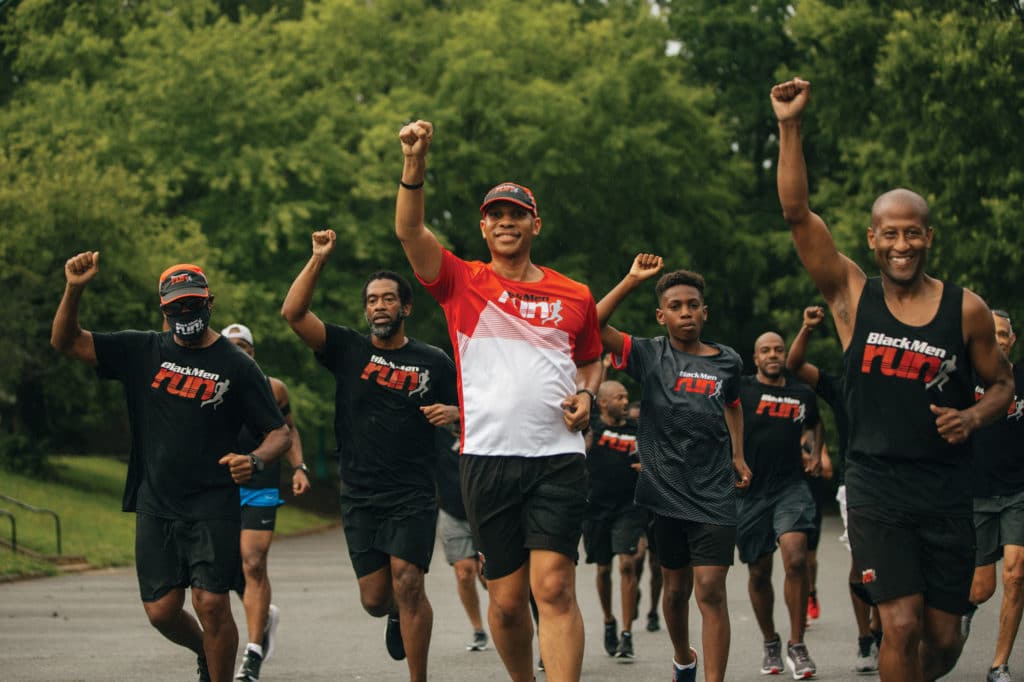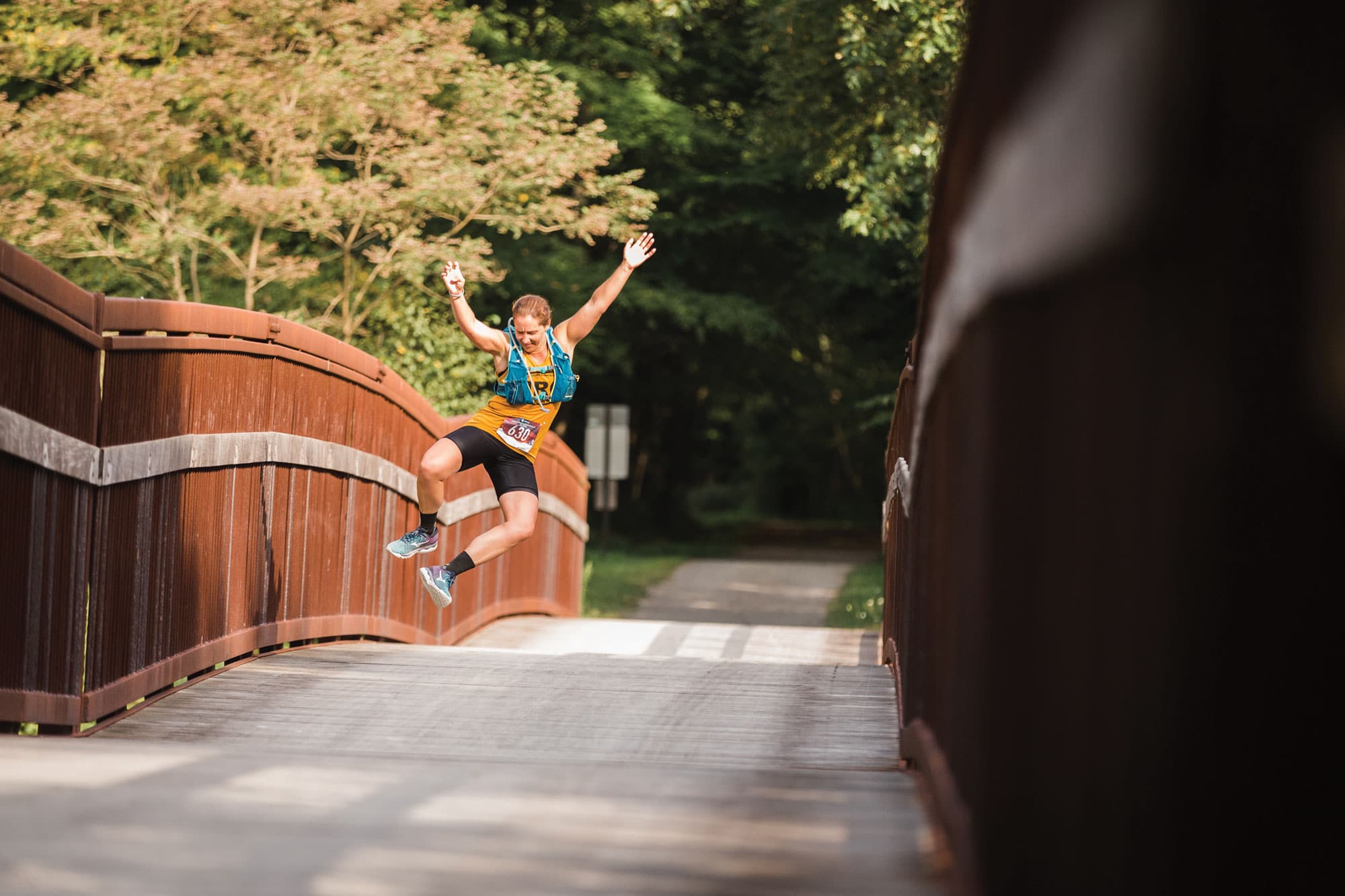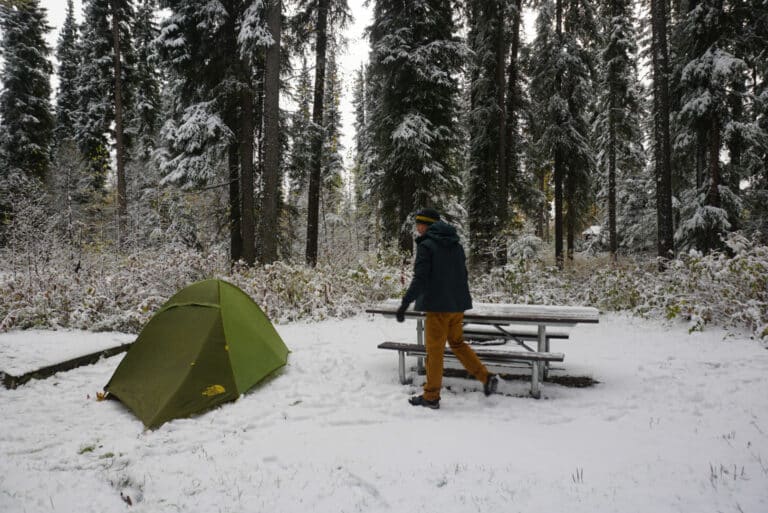How Event Directors and Athletes are Preparing for Another Uncertain Season of Competition
The weather was terrible, the kind that makes an already tough 100 miler absolutely hellish. But when Jenny Bonner thinks back to that race in 2016, she doesn’t focus on the muddy trails or the burning tension in her muscles as she fought her way uphill. She remembers the group of runners—all of them struggling to make the cut-off time—she formed a pact with them to stay together, providing support and encouraging words on the challenging Grindstone 100 course.
The runners had never met before, but they traded layers to stay warm and timed snack breaks to stay on pace. “There’s something about climbing mountains and exchanging life stories during those kinds of adventures,” Bonner said. “Every race provides an opportunity to connect with a stranger.”
But these spontaneous bonds were largely lost last year.
Racing in 2020 looked wildly different as event directors and competitors scrambled to adapt in the midst of a global pandemic. As permits were pulled and events went virtual, some people missed having a goal to work towards. Others missed the competition, trying to beat personal bests and keep up with fellow runners. But mostly, they missed the people.
“When I walk into a packet pickup, it’s like going home for Thanksgiving,” Bonner said. “When you don’t have the camaraderie of those shared miles with your friends, it’s harder to find the motivation.”

Going Virtual
Although virtual races have been around for years, their popularity exploded in 2020. “They’re a great way, even post-COVID, for those who are tight on time or finances and aren’t able to travel to an in-person event,” Bonner said. “They’re a great way for people to feel like they’re a part of the running community.” The accessibility of these virtual events attracted new participants across the country as outlets to help them stay active while following social distancing guidelines and stay-at-home orders.
Layla Doman, a triathlete and competitive cyclist, participated in virtual multisport events like the Virtual Run and/or Bike Across Maryland and the Atlantic Coast Virtual Challenge. Although she hasn’t trained or competed in swimming since last March, these challenges helped Doman keep up with her running and cycling. “The run is my least favorite,” she said. “Being on a training plan helped me to be consistent with running and enjoy running a lot more.”
Toward the end of the year, Doman started joining group cycling rides where everyone could spread out while still enjoying each other’s company. “I definitely came to embrace cycling a lot more,” she said. “It was already my favorite of the three disciplines but it became my solace for sure.”
Still, Doman is looking forward to competing in person again with her race day cheer squad supporting her at the finish line. “There’s nothing like knowing that somebody recognizes you and your effort,” she said.
In addition to giving people outlets to race, virtual events were a way to build community online as everyone struggled with the effects of the pandemic. Rafael Ortiz, national co-captain, director of marketing, and team captain for Black Men Run, said running took on another level of importance for members of the Black community during the country’s reckoning with racism in 2020. “We provided a safe place for us to deal with the emotions of COVID disproportionately affecting our community,” Ortiz said. “We also held forums to process how we felt about the racial division and civil unrest that resulted from the unjust killings of Black men and women, especially Ahmaud Arbery, who was also a runner. Our group became more intentional about our mission. We wanted to make sure that every time we laced up our shoes, we remembered it is a privilege to run.”
Every year, the organizers of Black Men Run choose one marathon to serve as their national meetup. With 55 chapters across 30 states, it’s a chance for members from all over the country to gather, compete, and uplift one another. Unable to meet as planned at the Detroit Free Press Marathon last year, the organization instead created their own virtual race series to fill the gap. Ortiz said they were able to get more participants as a virtual series since travel logistics and timing affect how many people can attend an in-person event.
Instead of just one event, the series consisted of four distances spread out over several weeks. “Participants liked it because it allowed them a chance to get some miles in, rest, and then prepare for the next race,” Ortiz said. “They didn’t have to do all distances in one weekend or over three or four days.” Most of the members who participated completed all four distances, starting with 2.5 miles and working their way up to a 15K.
Despite the success of their virtual event and others across the country, Ortiz doesn’t think in-person events are going anywhere, especially with so many people missing cheering crowds and the camaraderie of congregating with large masses of runners. “You can’t really duplicate the competitive aspect of seeing a person in front of you and chasing them down,” he said. “Even if you run with a small group of people, there’s nothing like running with large crowds and hearing the cheering. From that standpoint, I don’t think we will go to a virtual experience forever.”
A New Set of Rules
Despite limits on group gatherings and pulled permits, some smaller in-person races were able to take place in 2020. Ryan Roma, co-owner of Dirty Bird Events, said the pandemic hit at a particularly challenging time as the spring is usually when registrations are coming in so they can submit the paperwork for permits. “Revenue dried up pretty much in a week,” he said. “A lot of race directors and companies didn’t know whether their race was going to go on. Many don’t even now.”
Most of Roma’s events are off-road with smaller fields of runners, so it was easier to stagger start times and spread out competitors on the trails. Still, Roma said they only saw about half the participation they usually get for their eight events. Those who did participate were eager to compete in person, even if it meant no hugging at the finish line or extensive sanitation procedures. “Whatever we asked them to do, they were so responsive,” Roma said. He sees smaller races returning to somewhat normal this year with a dedicated group of people working behind the scenes, but he’s looking forward to when a regular race day party atmosphere can return.
The pandemic also affected nonprofit organizations who rely on race entries and sponsorships to fund their programs. All proceeds from the Cambria County Trail Race Series in Pennsylvania, for instance, help the Cambria County Conservation and Recreation Authority fund trail maintenance and beautification projects that grants don’t typically cover.
Co-Race Director Caytlin Lusk said they canceled their first event of the 2020 season because restrictions and protocols seemed to be changing almost daily. With too many unknowns, they had no other choice. They postponed their second event, the Ghost Town Trail Challenge, from June to August to allow more time to come up with a plan. “We’ve never been so prepared in our lives,” Lusk said. “It really got us, as race organizers, on our toes. It was a wake-up call making sure that we are addressing every need to the finest point possible.”
Runners were asked to wear their masks at least 200 yards into the race until they could maintain six feet of distance. Aid stations consisted of single-serving snacks and drinks. When they finished, runners were asked to quickly collect their medals and head to their cars. “They’re never going to forget that year that they had to wear a mask,” Lusk said. Series organizers are planning for the 2021 season to include the new guidelines and regulations that were developed last year.
For Lusk, the pandemic has demonstrated how important local trails are and the need for continued maintenance. “A lot of these new users that we’re seeing, people that might pick up running as a new hobby because the gyms were shut down for so long, I’m hoping it’s pushing them to get out, use the trails more, and to see the value in the trails,” she said. In Cambria County, Lusk said they saw an over 200-percent increase in usage on some of their trails.
Looking Ahead
As a new year begins, many in the industry are still unsure when races will fully return to previous capacity. Although COVID-19 vaccines have brought hope to many, the end of the pandemic is still a ways off.
With a year under their belts putting on virtual races, changing race day to fit protocols, and adapting to new restrictions, event directors and athletes are cautiously optimistic about what racing in 2021 will look like. Roma said they are confident they can pull off in-person events but are waiting to open registration for Dirty Bird Events, since they need approval from cities and municipalities to hold races. “As a race promoter, you can do everything you can to safely do it, but if you’re not allowed to, you’re not allowed to,” he said.
After almost a full year of living in a pandemic, competitive athletes are ready for a return to their favorite starting lines. Frankie Gerloff, coach and head of Virginia Capital Fitness who works with runners every year to help them train for half and full marathons, sees a comeback on the horizon, even if virtual races and timed runs are still part of the broader competitive scene as events attempt to return.
“There’s going to be a level of innovation and creativeness that’s going to happen in putting on races,” Gerloff said. “I think that you’re going to see more 5Ks, 10Ks, and half marathons offered in the third and fourth quarter of 2021 and into 2022 to regain some of that lost capital that’s happened.”
But Gerloff cautioned that an overabundance of races post-pandemic could hurt the industry in the long run. “There has to be a level of smart financial decisions that are made so that you’re not oversaturating it,” he said. “When you dilute a particular market area having all of those races, everyone’s going to lose. It has to be done intelligently.”
Runners like Jenny Bonner are using caution when signing up for races that are scheduled in 2021. While monitoring the uncertainty of the pandemic, she’s planning to focus on small, grassroots races and hold off on registering until the event dates approach. “I know that a lot of people are super frustrated with races getting canceled and losing whatever financial investment or training investment that they’ve put into that,” Bonner said. “But these event organizers are doing the best that they can. They’re weighing the same things that we’re weighing in our minds.”
Cover photo: Ghost Town Trail Challenge Participants had to follow strict COVID guidelines. Photo by Cory Shoff








